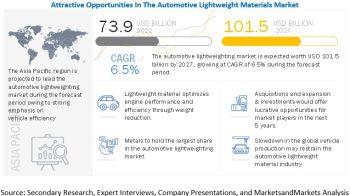
The Global Electric Commercial Vehicle Market size is projected to grow from 353 thousand units in 2022 to 3,144 thousand units by 2030, at a CAGR of 31.4%.
The demand for electric commercial vehicles like electric buses, electric trucks, electric pickups and electric vans is mainly fueled by the lower running costs of these vehicles compared to their ICE counterparts. Environmental concerns for reducing vehicle emissions have also led to countries opting for electric commercial vehicles.
Opportunity: Development of wireless EV charging technology for on-the-go charging to fuel market
The wireless technology for on-the-go charging has been under development for the past few years. Once this technology matures, people will not need to charge their vehicles as these are expected to be automatically charged while in use. This technology is currently significantly high-priced but may be used in the coming decades. It is expected to significantly impact the EV market as the sales are expected to increase at a high rate when this technology is applied. As of 2021, wireless EV charging is available for stationary charging. In Norway, a trial of wireless on-the-go EV charging is undertaken, which is expected to cater to a 25 Oslo-based fleet of Jaguar I-pace taxis and enable charging. The Norwegian capital has launched an initiative called ElectriCity, which aims to make its taxi system emission-free by 2024.
Download PDF Brochure @ https://www.marketsandmarkets.com/pdfdownloadNew.asp?id=16430819
In the ECV market, by vehicle type, the electric van segment is projected to dominate the market, while electric pickups will be the fastest-growing segment during the forecast period. The high adoption rate and rising demand for clean personal mobility are expected to drive the market for both these segments. Electric buses will also grow at a considerable rate with government grants in many countries around the world. Electric trucks on the other hand are expected to have moderate growth due to their cost and range issues. Plans by governments to convert ICE taxi fleets into zero-emission are expected to provide significant growth opportunities in the coming years.
The European ECV market is projected to grow at a high rate. Germany is projected to be the largest ECV market in Europe. The German market is projected to grow due to increasing investments by the government to develop EV charging and hydrogen infrastructure and the fast adoption of EV and Fuel cell buses in public transportation. France, the Netherlands, Norway, Sweden and UK also have a considerable market for electric commercial vehicles. Their governments have supported the growth of zero-emission vehicles in their countries. Many top OEMs in the region have been catering to the growing market.
Request FREE Sample Report @ https://www.marketsandmarkets.com/requestsampleNew.asp?id=16430819
The Asia Pacific is expected to be the largest electric commercial vehicle market during the forecast period. The ECV market in the region is led by countries like China, Japan, South Korea and India. China is the world’s largest electric commercial vehicle producer and the user has dominance in the industry in the APAC region. The country has more than 95% of the global electric bus sales and a considerable part of the electric truck, pickup and van sales in the region. India is also working on increasing its ECV adoption in the market. Different states have policies to provide incentives for buying electric buses. This is on top of the incentives provided by the FAME II policy, which effectively reduces the cost of electric buses by up to ~30% of its initial buying cost. South Korea is also one of the largest electric pickup manufacturers in the region along with a large demand for electric vans.
The electric commercial vehicle market is dominated by established players such as BYD (China), Yutong (China), AB Volvo (Sweden), VDL Groep (Netherland), and CAF (Spain).
To speak to our analyst for a discussion on the above findings, click Speak to Analyst

